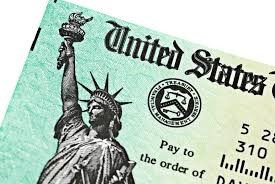Everybody loves a tax refund. But as good as it can feel to get a fat check from Uncle Sam; the best strategy for maximizing your dollars in many cases is to minimize your tax refund.
A tax refund typically means you have been paying more than the appropriate amount of income tax to the U.S. government over the course of the year, providing Uncle Sam with what amounts to an interest-free loan directly from your paycheck in the form of withholding. The tax refund essentially is the government repaying you for the loan. Trouble is, not only can’t you charge Uncle Sam interest for the right to borrow your money; you’re also losing the opportunity to put that money to constructive use yourself.
You could, for example, put that money…
- Into an investment or retirement account, where it has a chance to grow. One especially wise move is to put the money into a tax-deferred or “qualified” retirement account, like a 401(k), where not only does it have a chance to grow over the long term, it also reduces your taxable income for that tax year, likely cutting the amount of tax you owe. This is a tax “double-whammy” – and a good one. It turns into a triple-whammy if the extra contribution into the retirement account comes with a matching contribution from the employer
- Toward paying down credit card debt or a mortgage
- Toward a larger down-payment on a car or a home than you’d otherwise be able to make, thus reducing your debt going forward
- Toward a child’s college education
- Into an emergency savings account
- Toward some other worthy and non-frivolous goal for which you’ve been saving
A tax refund of a few hundred dollars may not warrant taking action. But when the refund reaches into the thousands of dollars, said Benton, it’s probably time to adjust your tax withholding, which entails submitting an IRS form called a W-4 that instructs the government as to the amount of income tax to withhold from each paycheck, based primarily on your tax filing status (single or married), your projected income and the number of withholding allowances you claim. You can file a W-4 through your employer’s payroll or human resources department, or you can direct your tax preparer to do it for you.
Examples of life events that warrant withholding review for changes include marital status changes: marriage / divorce / death of a spouse; changes of dependents: additions to the family through birth or adoption. The purchase of a home may now allow for itemizing deductions due to mortgage interest and taxes.
One way to estimate what your withholding amount should be, and whether you’re on track to withhold more than you should, is with the IRS Withholding Calculator at www.irs.gov.
But before you take any action it’s best to consult a professional, such as your Vermillion Advisor (CFP®) or accountant, to help you determine an appropriate withholding level, and help you decide how to best use the money that will no longer be withheld from your paycheck.
It’s a quick and worthwhile number-crunching exercise, especially given the potential benefits you’re in a position to reap by putting your hard-earned dollars to better use. It’s so much smarter than providing Uncle Sam with an interest-free loan every year.
Note: The opinions voiced in this material are for general information only and not intended to provide specific advice or recommendation for any individual. Please remember that past performance of investments may not be indicative of future results. Different types of investments involve varying degrees of risk, and there can be no assurance that the future performance of any specific investment, investment strategy, or product made reference to directly or indirectly in this newsletter (article), will be profitable, equal any corresponding indicated historical performance level(s), or be suitable for your portfolio. Due to various factors, including changing market conditions, the content may no longer be reflective of current opinions or positions. Moreover, you should not assume that any discussion or information contained in this post serves as the receipt of, or as a substitute for, personalized investment advice from Vermillion Financial Advisors, Inc. To the extent that a reader has any questions regarding the applicability of any specific issue discussed within this newsletter to his/her individual situation, he/she is encouraged to consult with the professional advisor of his/her choosing. A copy of our current written disclosure statement discussing our advisory services and fees is available for review upon request.
Continue reading and jump to the next post,
Helping grandkids pay for college – A quick course for grandparents


